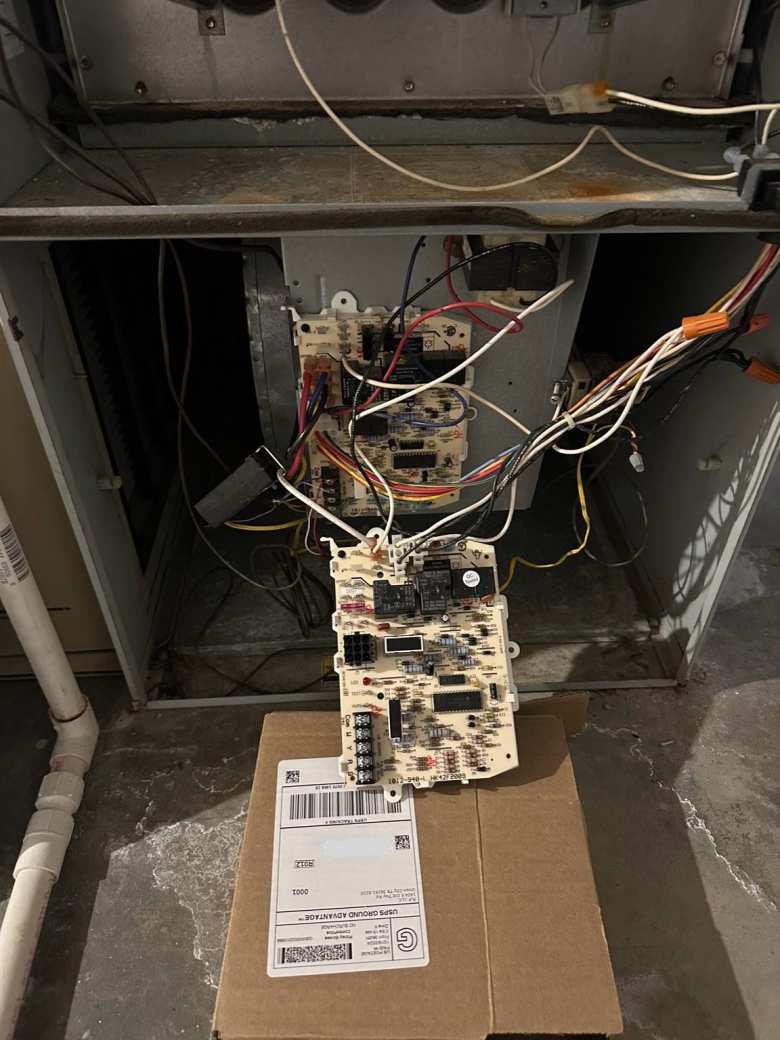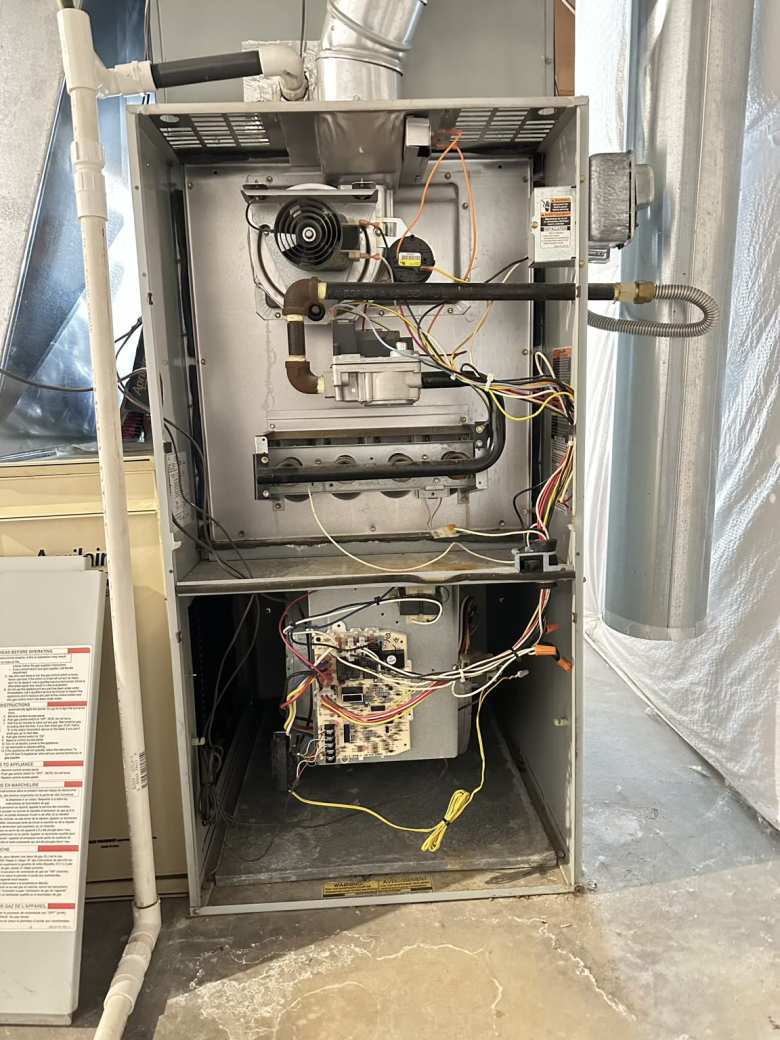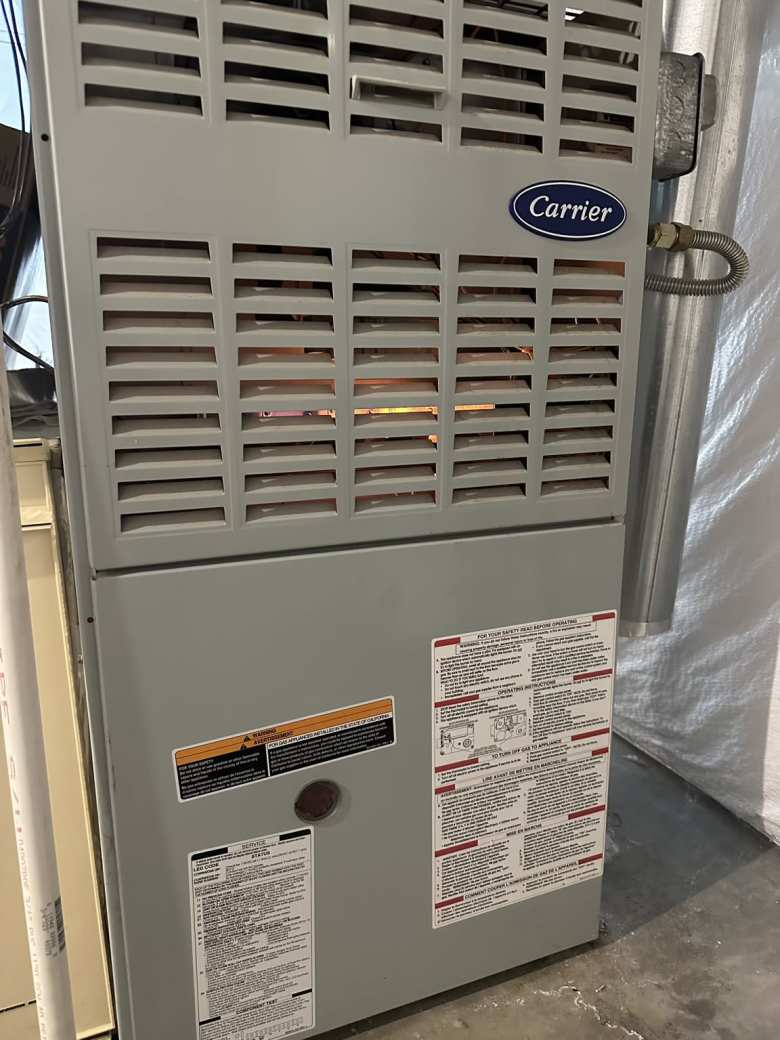Furnace Foibles
Returning to Fort Collins to take care of some house-related matters, I was greeted by a few surprises, most notably with the heating and cooling systems. It all started during the summer, while my house was rented out. The renters were running the air conditioning 24/7, and after a week of that, some wires shorted out causing the circuit breaker to trip repeatedly. I called in a handyman who diagnosed and resolved the short. That was not an inexpensive service call, but it was a relief that he was able to get the A/C back up and running.
In the midst of this A/C mishap, I found myself with another problem: my internet-connected thermostat was no longer controllable from Spain, or any remote location for that matter. It turned out the thermostat, now considered outdated, was no longer supported, and I had to replace it. That was one of the first things I took care of upon arriving in Fort Collins, along with several other home maintenance projects, like trying to (and succeeding in!) revive the half-dead front lawn with many bald patches.
Just a few weeks later, Northern Colorado temperatures began to dip—enough to compel me to turn on the heat. However, when I tried to switch it on with the thermostat, nothing happened. The gas furnace sat there in the basement, lifeless—no blower, no heat. Just silence.
This was worrisome, as snow was in the forecast. Yet I felt a sense of relief that it was still fall, and there was no immediate risk to the pipes or other essential parts of the house… yet. It was much better than my furnace fiasco back in 2013 when the furnace broke down on a Friday night in single-digit temperatures. Back then, I had to huddle by the fireplace with my cats, and even rescued my Betta fish, Mr. T, by placing him near my workstation computer’s warm airflow with a towel draped over his bowl.
Determined to tackle this current problem, I armed myself with my trusty multimeter and a dose of patience. I spent a couple of hours diagnosing, starting by checking that the thermostat was indeed sending a signal to the furnace. Manually activating the blower fan worked fine, ruling that out. Then, I did a virtual crash course on furnace sequences of operation, reading articles online and watching YouTube videos.
This process, of course, involved removing the furnace panel, exposing the furnace control board. After taping the panel’s interlock switch closed to temporarily bypass this safety feature, I finally noticed a blinking light on the circuit board which signified that something was amiss. I couldn’t ‘reset’ this error code by simply toggling the power; the blinking light stubbornly persisted. The panel included a diagnostic guide, which indicated that a rapid blinking light meant “polarity reversed.”
I was entirely dubious of input power wires being reversed. The furnace had run without issues for over 22 years, and I was fairly certain the handyman wouldn’t have switched any wires. Instead, I suspected that the circuit board was mostly likely damaged when wires were shorting and causing the circuit breaker to perpetually trip. A YouTube video created by an HVAC technician witnessing the same furnace symptoms seemingly confirmed my hunch.
I searched for the circuit board’s part number (1012-940-L HK42FZ009) online and found several listings on eBay. I ultimately ordered a “100% guaranteed working” used circuit board from an HVAC supplier in Tennessee for $80, including taxes and shipping. It was used, of course—I was under no illusion that it would easy to find a new replacement circuit board for a 22-year-old furnace—but that the seller claimed it was fully tested gave me confidence.
The supplier shipped it right away, but it took eight days to arrive instead of the 4-5 days that eBay/USPS had estimated. During that wait, I made do with wearing extra clothes and occasionally using a small electric heater that I had equipped the guest room with as the house temp dipped to a brisk 57°F.
When the new circuit board arrived, the installation was straightforward in theory, but required patience in practice. With so many wires and connectors, I didn’t want to risk reconnecting anything incorrectly. In addition to snapping a few ‘before’ photos for reference, I disconnected each wire from the old board and connected it to the new board one by one.

I also tidied up the wiring with zip ties for good measure.

After about 45 minutes, everything was in place. Holding my breath, I switched the circuit breaker back on. The circuit board light was now a solid red—hooray for not blinking! I then activated the heat via the thermostat app on my phone, and the blower fan immediately activated, followed by a well-choreographed ignition of flames moments later. With a low hum, warm air began to flow through the house vents. Success!

It was a relief to get the heat working without an emergency call to an HVAC technician. Just recently, a gardener who blew out (winterized) my sprinklers told me about a client who faced a similar issue but ended up being told they needed a new furnace altogether, which set them back a staggering $17,000. By diagnosing and fixing the furnace myself, I saved at least many hundreds of dollars—and possibly saved myself from a pushy upsell costing thousands.
Of course, had a renter been in the house and I were overseas at this time, it likely would have been a much more urgent and expensive ordeal. I’m grateful that I was here and could take my time with the repair and avoid unnecessary expenses. There’s nothing quite like the feeling of taking a deep breath in a warm room, knowing the furnace is purring along again, ready to keep the cold Colorado winter at bay.

There are 2 comments.
I admire you for being so handy around the house. There are things that we have fixed ourselves thanks to online articles and YT videos, but I would not have been able to fix a furnace problem like this myself. Good job!
Thanks! I think the biggest thing I took away from engineering courses (particularly ME130) was that you can figure out how anything works by being observant and thinking logically and sequentially (often working backwards, as in reverse engineering).
Debugging in software engineering is similar, as you can attest.
We are so lucky nowadays for the Internet and YouTube. I remember working on my first car, a 1974 MGB (not Goldie), while flipping through an imported, oil-stained, two-pound Haynes workshop manual with exploded parts drawings. I misdiagnosed problems so many times during hundreds of hours of work, but certainly learned a lot!